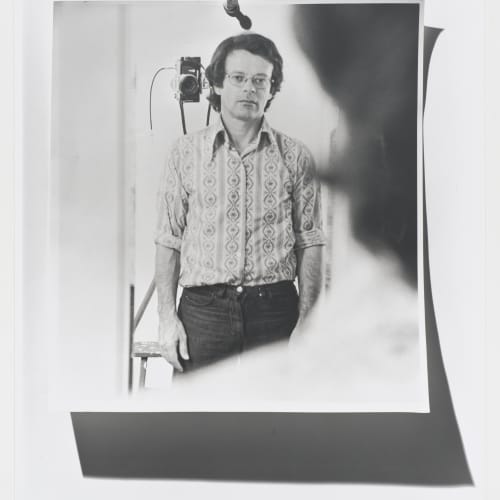Pathbreaking Conceptual photographer Lew Thomas died in August in Petaluma, California, at the age of eighty-eight. The news was announced by the Los Angeles–based Philip Martin Gallery, his longtime representative. The Bay Area artist beginning in the early 1970s created memorable bodies of work, typically in black-and-white, themed around words’ relationship to one another, the pictorial embodiment of language, and the passage of time. Alongside artists including Lutz Bacher, John Baldessari, Hal Fischer, Barbara Kruger, and Cindy Sherman, he was a part of the Photography and Language movement, which took root in California in the mid-1970s and greatly influenced the conceptual photography of the 1980s. Writing in Artforum in 2014, Sarah Lehrer-Graiwer noted, “His structural allegiance to basic black-and-white is so succinct yet capacious—depicting imagery that resonates metaphorically, often in racial terms—that it acquires an intense social dimension. At the same time, its literal, one-to-one indexicality anticipates both the copy-and-paste re-presentational logic of the Pictures generation and all the digital peregrinations that have followed.”
Born in San Francisco in 1932, Thomas earned his BA from the University of San Francisco in 1962. Eschewing what he perceived as the mysticism and emotionalism pervasive in Bay Area photography of the time, he took philosophy and conceptualism as his lodestars, producing works such as the seminal BLACK & WHITE, 1971, a diptych featuring the word black in white on a black background, stacked above the word white, printed in black on a white background. An equally significant work of this era is the terse Opening & Closing the Garage Door, 1972, in which the eponymous act is performed across ten frames in two vertically aligned photo strips. Thomas forcefully rejected the idea of conceptualism as avant-garde, in 1976 describing the characterization as “project[ing] an image of extremist doctrine that hardly relates to issues that concern my work, namely: normalcy, language, structuralism and the problematic of photography.” That same year, with Donna-Lee Phillips, he cofounded NFS Press, which before its 1981 shuttering produced Photography and Language (1976), Eros And Photography (1977), Hal Fischer’s now-canonical Gay Semiotics (1977), Structural(ism) and Photography (1978), and, with coeditor Peter D’Agostino Still Photography: The Problematic Model (1981). The books contained a number of groundbreaking essays, including Robert Leverant’s “Ontology of the Snapshot” (1977) and Allan Sekula’s “Dismantling Modernism: Reinventing Documentary” (1978).
Thomas exhibited widely, at the de Young Museum, San Francisco; the Menil Collection, Houston; the Museum of Modern Art, New York; and the Oakland Museum, California, among other institutions. A recent exhibition of his work with and alongside Fischer and Phillips at the San Francisco Museum of Modern Art closed in late 2020; another exhibition on the cohort will go on view at the Addison Gallery of American Art in Andover, Massachusetts, later this year. Thomas was also an accomplished curator, serving from 1989 to 1995 as the curator of the Contemporary Arts Center, New Orleans, and after that as director of the Stan Rice Gallery, also in New Orleans. His work is held in the collections of MoMA, SF MoMA, the Santa Barbara Museum of Art, California; the Museum of Fine Arts Houston; Princeton University Art Museum, New Jersey, among others.

